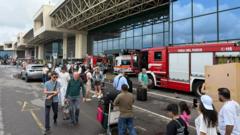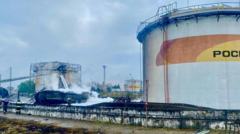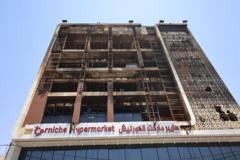A recent report highlights how a fire at Heathrow's electrical substation, due to years of deferred maintenance, led to significant operational disruptions.
Heathrow Airport Closure Linked to Years of Neglected Maintenance

Heathrow Airport Closure Linked to Years of Neglected Maintenance
Investigative Report Reveals Longstanding Electrical Issues Cause Major Shutdown
The fire at an electrical substation that triggered a more than 12-hour shutdown at Heathrow Airport earlier this year was attributed to a short circuit in a transformer component that had not received essential upkeep for nearly eight years, according to a report by UK government regulators released on Wednesday. This incident on March 21 disrupted over 1,000 flights at one of the world's premier travel hubs, sending travel plans into disarray as electricity loss crippled critical safety systems and paused all flight operations for a substantial part of the day.
Initially, the cause of the outage was linked to a major fire at the substation, with authorities ruling out terrorism and other malicious acts. However, details remained sparse until the recent report illuminated the root of the blaze. It unveiled that a malfunctioning bushing—an insulated component in the transformer—had been identified as an issue in 2018, yet went unaddressed for years. Crucially, routine maintenance was postponed in 2022, leading to an incomplete oversight of the substation operated by National Grid Electricity Transmission, which had last conducted thorough servicing on the relevant transformer in July 2018.
The resulting power outage raised alarms among travelers, airline executives, and key political figures, including British Prime Minister Keir Starmer, who expressed serious concerns regarding the situation and emphasized the need for clarifications on the incident. The report elaborated on deeper vulnerabilities within Heathrow's internal power systems, which lacked the capacity to seamlessly draw backup power from unaffected nearby substations during emergencies. It noted that airport officials had misjudged the likelihood of such a catastrophic power failure, failing to prepare for an unexpected loss of electrical supply.
The findings also criticized the design of the airport’s electrical distribution network, which depended on manual operation to recover power instead of utilizing automated backups from multiple supply sources. This incident served as a wake-up call about the resilience of the United Kingdom's electrical infrastructure and the imperative for improved maintenance oversight in vital facilities like airports.
Initially, the cause of the outage was linked to a major fire at the substation, with authorities ruling out terrorism and other malicious acts. However, details remained sparse until the recent report illuminated the root of the blaze. It unveiled that a malfunctioning bushing—an insulated component in the transformer—had been identified as an issue in 2018, yet went unaddressed for years. Crucially, routine maintenance was postponed in 2022, leading to an incomplete oversight of the substation operated by National Grid Electricity Transmission, which had last conducted thorough servicing on the relevant transformer in July 2018.
The resulting power outage raised alarms among travelers, airline executives, and key political figures, including British Prime Minister Keir Starmer, who expressed serious concerns regarding the situation and emphasized the need for clarifications on the incident. The report elaborated on deeper vulnerabilities within Heathrow's internal power systems, which lacked the capacity to seamlessly draw backup power from unaffected nearby substations during emergencies. It noted that airport officials had misjudged the likelihood of such a catastrophic power failure, failing to prepare for an unexpected loss of electrical supply.
The findings also criticized the design of the airport’s electrical distribution network, which depended on manual operation to recover power instead of utilizing automated backups from multiple supply sources. This incident served as a wake-up call about the resilience of the United Kingdom's electrical infrastructure and the imperative for improved maintenance oversight in vital facilities like airports.




















